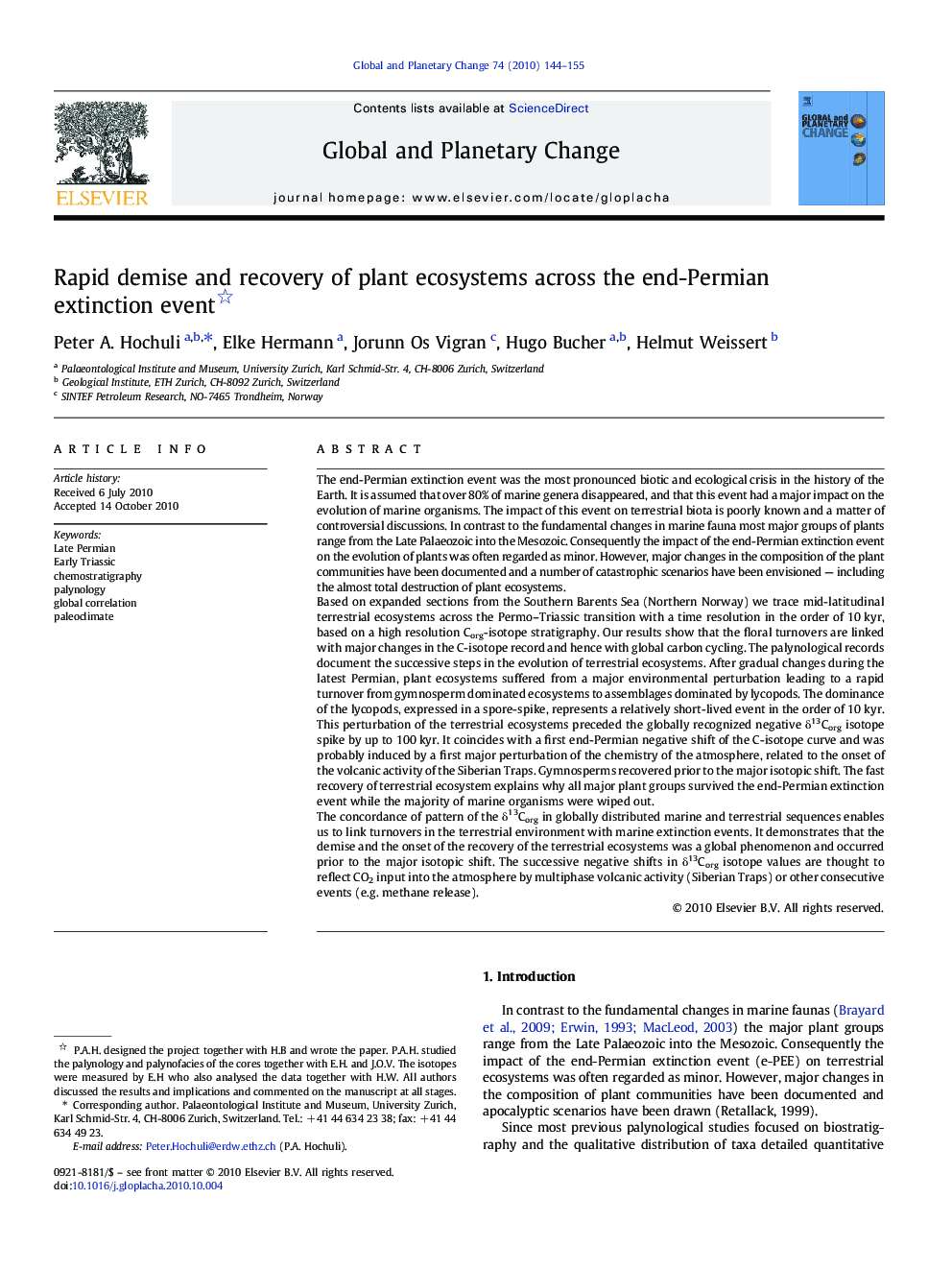| کد مقاله | کد نشریه | سال انتشار | مقاله انگلیسی | نسخه تمام متن |
|---|---|---|---|---|
| 4463896 | 1621702 | 2010 | 12 صفحه PDF | دانلود رایگان |

The end-Permian extinction event was the most pronounced biotic and ecological crisis in the history of the Earth. It is assumed that over 80% of marine genera disappeared, and that this event had a major impact on the evolution of marine organisms. The impact of this event on terrestrial biota is poorly known and a matter of controversial discussions. In contrast to the fundamental changes in marine fauna most major groups of plants range from the Late Palaeozoic into the Mesozoic. Consequently the impact of the end-Permian extinction event on the evolution of plants was often regarded as minor. However, major changes in the composition of the plant communities have been documented and a number of catastrophic scenarios have been envisioned — including the almost total destruction of plant ecosystems.Based on expanded sections from the Southern Barents Sea (Northern Norway) we trace mid-latitudinal terrestrial ecosystems across the Permo–Triassic transition with a time resolution in the order of 10 kyr, based on a high resolution Corg-isotope stratigraphy. Our results show that the floral turnovers are linked with major changes in the C-isotope record and hence with global carbon cycling. The palynological records document the successive steps in the evolution of terrestrial ecosystems. After gradual changes during the latest Permian, plant ecosystems suffered from a major environmental perturbation leading to a rapid turnover from gymnosperm dominated ecosystems to assemblages dominated by lycopods. The dominance of the lycopods, expressed in a spore-spike, represents a relatively short-lived event in the order of 10 kyr. This perturbation of the terrestrial ecosystems preceded the globally recognized negative δ13Corg isotope spike by up to 100 kyr. It coincides with a first end-Permian negative shift of the C-isotope curve and was probably induced by a first major perturbation of the chemistry of the atmosphere, related to the onset of the volcanic activity of the Siberian Traps. Gymnosperms recovered prior to the major isotopic shift. The fast recovery of terrestrial ecosystem explains why all major plant groups survived the end-Permian extinction event while the majority of marine organisms were wiped out.The concordance of pattern of the δ13Corg in globally distributed marine and terrestrial sequences enables us to link turnovers in the terrestrial environment with marine extinction events. It demonstrates that the demise and the onset of the recovery of the terrestrial ecosystems was a global phenomenon and occurred prior to the major isotopic shift. The successive negative shifts in δ13Corg isotope values are thought to reflect CO2 input into the atmosphere by multiphase volcanic activity (Siberian Traps) or other consecutive events (e.g. methane release).
Journal: Global and Planetary Change - Volume 74, Issues 3–4, December 2010, Pages 144–155